Allu Arjun champions Indian culture: Embrace, own, celebrate
National Award-winning actor Allu Arjun urges youth to embrace and proudly own Indian culture, emphasizing its importance in today's society.
With the technological advancements and higher labor costs, it is rather sad to see the manual authentic art and culture being taken over by machinery, technology and new industrial innovations.
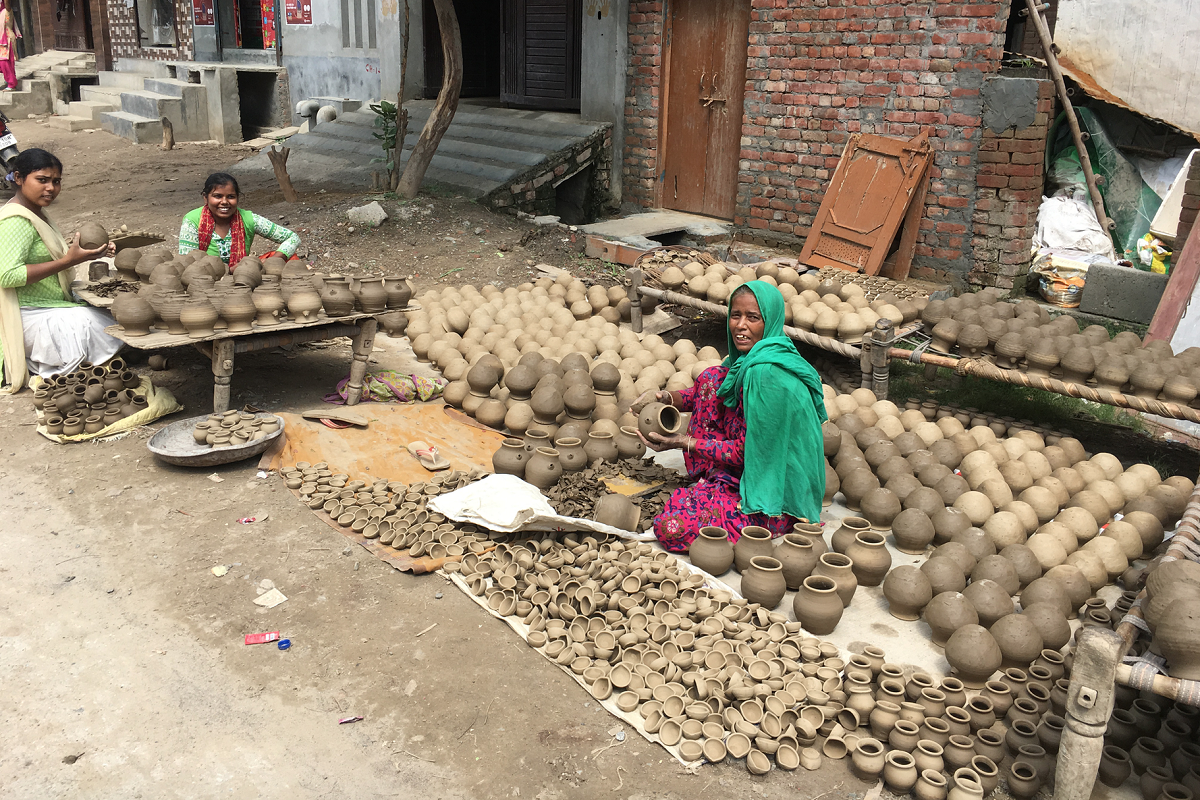
(Photo: SNS/Saanya Jain)
“It is unfortunate that this profession has now become a hand-to-mouth existence for us” exclaimed a potter on my visit to the Jatwara village in Sonipat. Even though the history of clay dates back to 9,000-10,000 BC at the time when clay vessels were used to store food and water, it is believed that the art of pottery is as old as humankind. The ancient art of pottery today is presumed to be a crucial antiquity when it comes to the studies of anthropology and archaeology. The clay culture has emerged as a quintessential, aesthetic art legacy. With the numerous enhancements of forms, substances, methods and materials that have been tried and experimented with, the perceptions and mindsets of people have evolved alongside.
Pottery is created by molding a ceramic shape which is later heated at high temperatures for the hardening and setting of shape. There are six processes involved in pottery, which, in Jatwara were done at home. These include sourcing, crushing, mixing, kneading, potter’s wheel and lastly, firing. It starts with the potter’s sourcing the clay material (which comes from the earth itself) from local towns, villages and states like Uttar Pradesh, Rajasthan and Bihar. This material is then crushed well under the tyres of a heavy vehicle which breaks it to fine bits. This fine mixture is then mixed with other materials like cow dung, sand, water and other biodegradable materials. This makes the clay moist which is useful in making pots. This process determines the life and longevity of the end product. Kneading or wedging helps to remove air bubbles from the clay which makes it easier to work with. Potters then use the potters’ wheel to create whichever shape required by spinning the wheel into objects like diyas, pots (matkas) or wall hangings. After it has been shaped, it is left to dry, fired and then painted and decorated for commercial purposes.
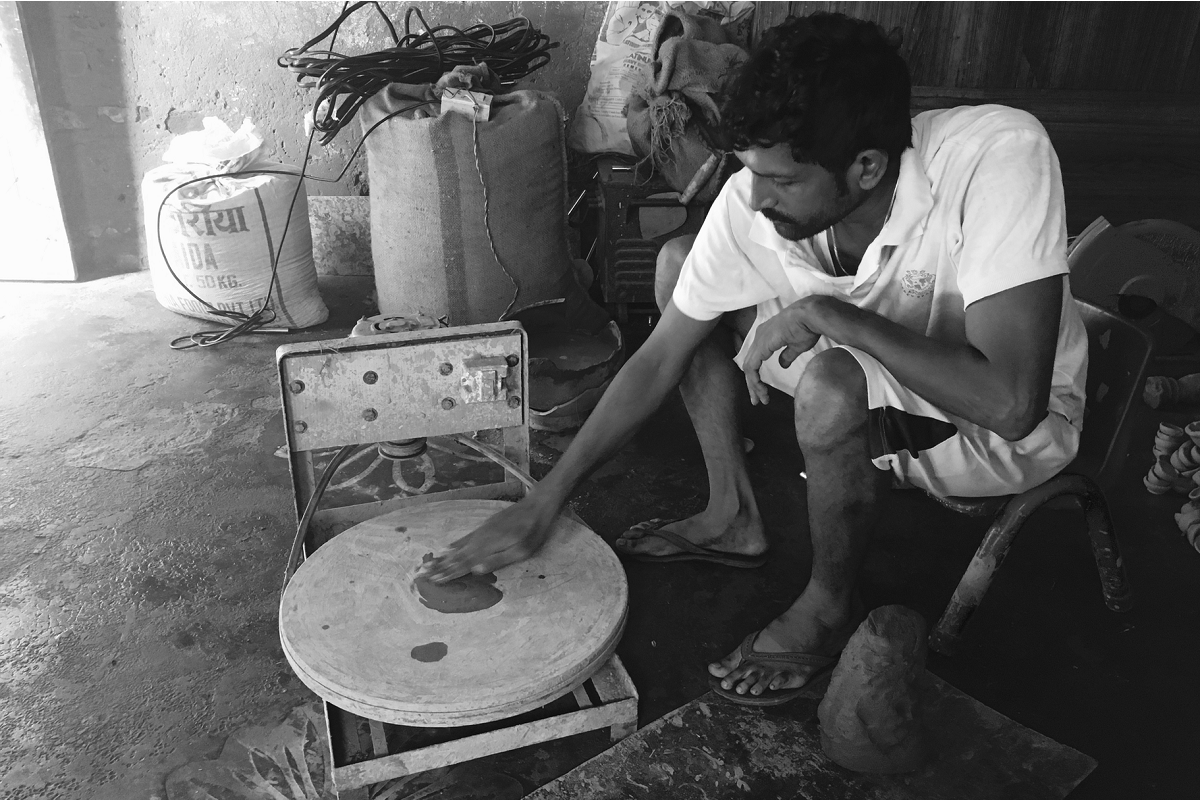
Advertisement
Although I was an outsider, I felt a rare connect as I walked through the narrow kachcha roads of the village. The street was profusely unique and allowed each one of us to see every step of the production process and discuss the pottery production and livelihood with individual potters, their families and other people who were in the neighbourhood. Every person in this community had a different story to tell and contribute to our knowledge of the way craft, the material and the skill is woven into the lives and the cultural history of the people.
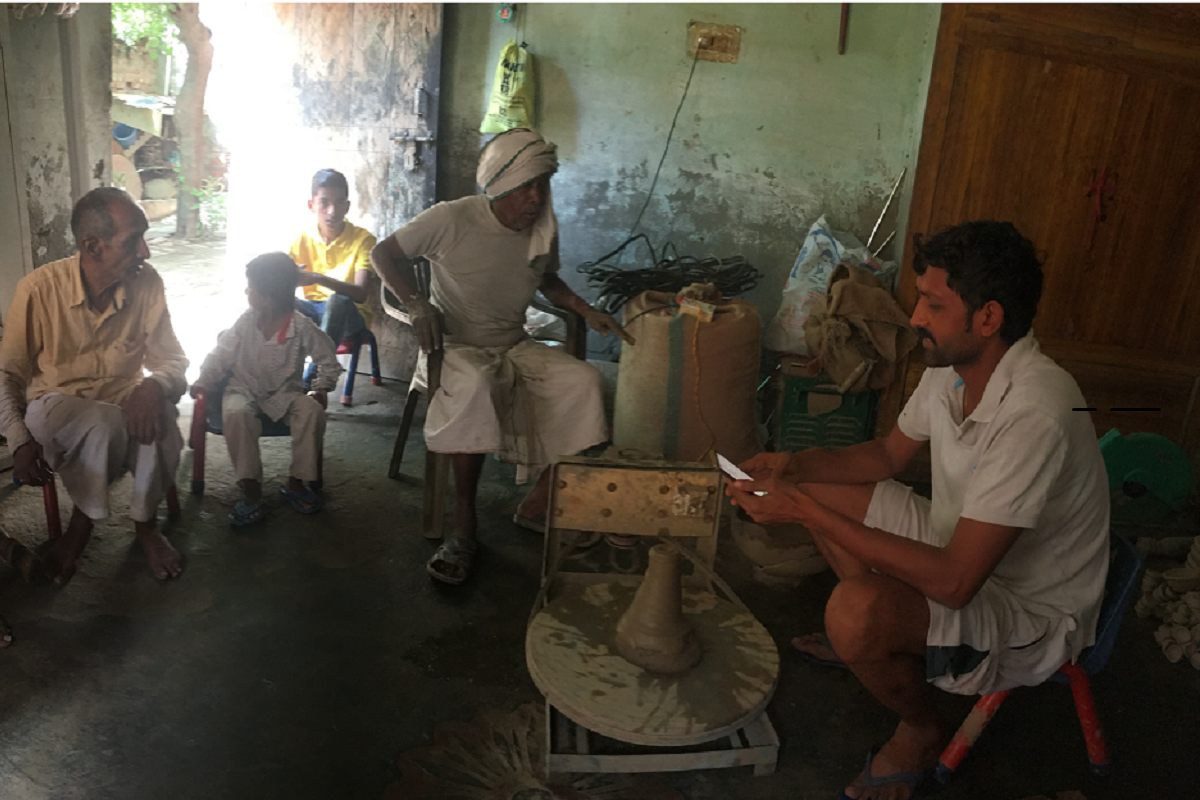
Each of these potters consider pottery as a passion more than a profession. They are deeply invested in the art form – mentally, physically and emotionally. Unfortunately, this profession does not allow them to earn a decent living, more so, because of lack of government funding and people moving onto the use of traditional handicrafts which is now being replaced by more utilitarian goods like plastic cups and vessels which are manufactured in China. The Chinese market is conquering the Indian market that is leading the pottery business to a downfall. In 2015-16, it was recorded that “India’s exports to China were only $9 billion while the imports from China were a staggering $61.7 billion leaving a trade deficit of $52.7 billion” (Suneja 2017). Because of this, the potters and clay professionals are forced to practice other occupations to sustain their living, which include welding, construction, fiber and steel works or other agricultural activities.
In addition, the potters nowadays do not wish for their successors to take up this profession and instead get a stable job in a Multinational Corporation. This is rather ironic as even though these potters seem to be emotionally attached to this occupation and do not want to see it dying down as the years pass, they do not wish to see their children following their footsteps.
During my research, I further found that pottery was a relatively seasonal business, which booms during the festivals of Diwali, Maha Shivratri, Ganesh Chaturthi, Dussehra among others. A small diya is sold for Re. 1, a bigger one for Rs. 5 and the biggest one for Rs. 10; the smallest ones being the ones that are high in demand. During Diwali, a potter can sell up to 10,000 diyas. Their business otherwise remains dormant for the rest of the year. Considering that even if these items are sold in bulk, an average potter would make up to only 5000 – 6000/- in a month which is clearly not enough to sustain a family of eight people, or in some cases, even more. These potters do not have access to a larger market and are unaware of the trade business.
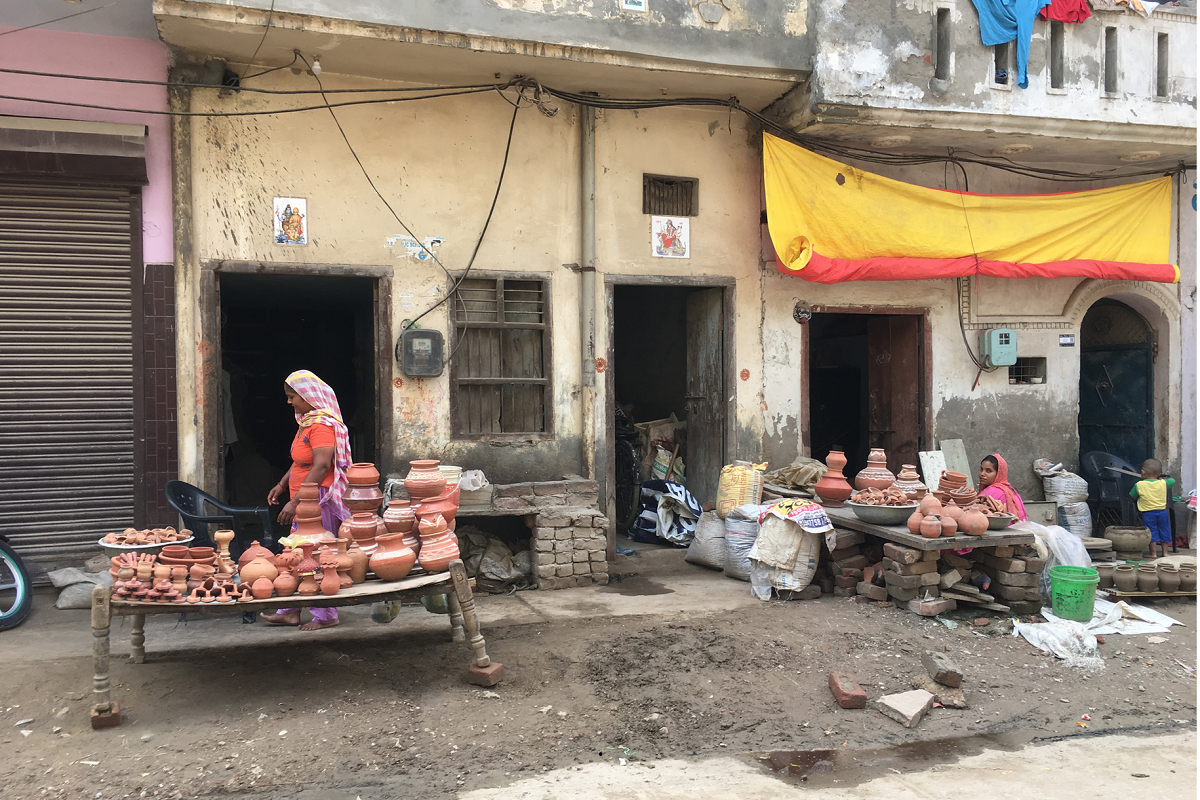
With the technological advancements and higher labour costs, it is rather sad to see the manual authentic art and culture being taken over by machinery, technology and new industrial innovations. This mechanisation seems to have taken a toll on the employment rate in India, leading to a massive reduction in the opportunity and exposure for talented and experienced artists and craftsmen.
In the olden days, “people used to store drinking water in clay pots because they kept the water cool, but today’s generation prefers to take its cold water from the refrigerator and the Indian railways used to give the potters plenty of business, where their small clay cups were used to serve tea, but they have since been replaced by disposable plastic cups. Even the clay pots that people grow flowers in are being replaced by lighter plastic pots” (Nair 2008)
It can be easily denoted that even though this fine crafts business takes up a huge chunk of time, effort and resources – it doesn’t seem to be very rewarding in its nature. The government support towards the declining clay business culture, providing the potters with some funding, recognition and an access to a wider market, seems to be a saving grace for the revival of this beautiful, age-old tradition, that has a significant role in defining the Indian culture and its identity.
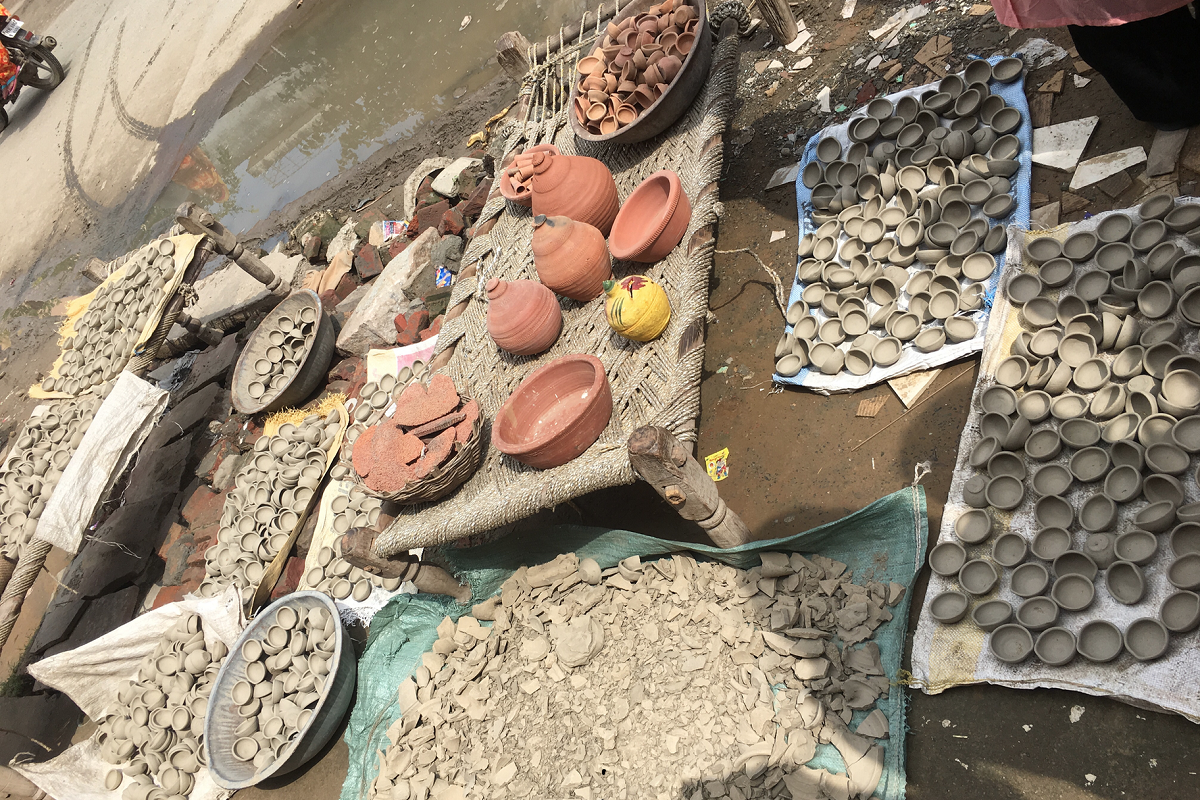
(Saanya Jain is currently in her third year, studying at O.P Jindal Global University’s School of Liberal Arts and Humanities. An alumni of Delhi Public School, R.K Puram, she is pursuing a self-designed major in International Business and Psychology).
Advertisement